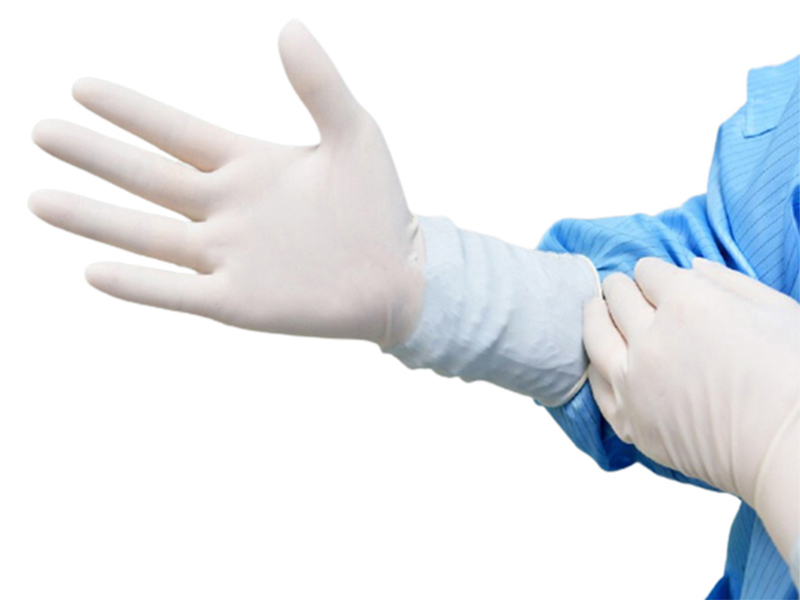FAQ
About Products
Yes. We Offer Free Sample. but You Need pay a small fee for shipping wholesale Surgical Gloves.
Our standard Gloves sizing ranges from 5.5 to 9.0 at an increment of 0.5. However, we can customize for you wholesale Medical Gloves according to how you want them.
Usually within 3 weeks if no customization on the products, but It may take up to 30 working days if the shipping company stock in trouble.

About Latex Allergies
Some individuals may experience allergic reactions when wearing or after wearing latex or plastic gloves. It has been known that products, other than gloves, which contain natural rubber latex, such as: balloons, balls, toys that contain rubber material; rubber bands, hoses, boots and rubber parts of instruments; tires, erasers, mouse pads, helmets, condoms, etc. may cause irritation or allergic reactions in some individuals.
These reactions range from dry, itchy, crusty skin with cracks or sores, to a runny nose, wheezing, difficulty breathing, swelling in the face, cramps and shock. Rare cases can even be potentially life-threatening.
As of this time, researchers are still unable to determine the exact level of latex protein, or the length of time an individual needs to be exposed to become allergic.
ASTM has set, and the FDA has proposed, a maximum of 200µg/g (µg/dm 2) for any glove. FDA has allowed a level of 50 µg/g (µg/dm 2) as a lower limit on claims using the Lowry test. The new ASTM ELISA test is hoped to be able to allow claims of 1/5th of that or less. While there are probably meaningful differences between 200, 50 and 10, users should be wary of attempting to make judgments on small differences in values in between these broad ranges.
Glove powder, which is used in the manufacturing process as a mold releasing agent and a donning lubricant, is also believed to be one possible cause of sensitization. However, it is important to understand that glove powder or cornstarch powder itself is not known to be an allergen.
It is during the manufacturing process whereby the glove powder can absorb some soluble protein. Via aerosolization, these powder particles become airborne. Inhalation or direct contact with these powder particles is alleged to bring about allergic reactions.
Therefore, it is important to use only gloves with low protein and low powder content or low protein and powder free gloves.
It is equally important to note that not all powder free gloves will have a low protein level. There are powder free gloves that contain a high level of latex protein. Therefore, the association of glove powder and soluble protein must be clarified, and only low protein powder free gloves should be used.
About Powdered and Non-Powdered
Powdered latex gloves have cornstarch added to them to help the user who is donning them (putting them on) to slide their hands in easier and faster. The Cornstarch is absent in case of Non-powdered gloves.
It is 100% corn starch and helps make it easier to put the gloves on or take them off
Look for a comfortable, good barrier protection, and tactile sensitivity. Individuals who are diagnosed with latex allergies should not use natural rubber latex gloves. If powder is inappropriate in an area, select powder-free gloves.
About Manufacturing
Chlorination is a process whereby chlorine, ammonia, water and other chemicals are utilized in the manufacturing of gloves. The chlorination process removes powder and breaks down the latex protein as well as the chemical residue on or near the glove surface. Then, through multiple washing and leaching processes, the protein and chemicals are further reduced.
A poor chlorination process (including over-chlorination) can result in gloves that are brittle and weak, tear easily, and have dark yellow or brown discoloring. Sometimes the gloves can be very sticky and make donning impossible or be very slippery without grip on the surface.
Poor chlorination also produces gloves that have a strong chlorine odor. For obvious reasons, chlorinated powder free latex examination gloves should not be recommended for dental use.
Post-oven leaching is very effective in removing natural rubber latex proteins from the glove surface. Washing the gloves with continually replenished hot water after the gloves pass through the ovens eliminates a significant amount of remaining natural rubber proteins.
Coagulant-coated formers are dipped into previously compounded and mature latex. When they reach the specified thickness, the newly formed gloves are sent to pre-oven leaching, an extensive procedure that results in the removal of residual calcium nitrate and some natural rubber proteins.

